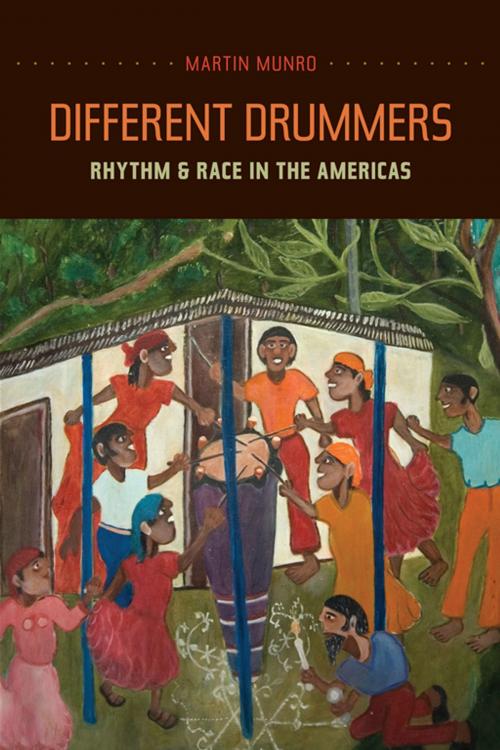Different Drummers
Rhythm and Race in the Americas
Nonfiction, Entertainment, Music, Theory & Criticism, Ethnomusicology| Author: | Martin Munro | ISBN: | 9780520947405 |
| Publisher: | University of California Press | Publication: | July 16, 2010 |
| Imprint: | University of California Press | Language: | English |
| Author: | Martin Munro |
| ISBN: | 9780520947405 |
| Publisher: | University of California Press |
| Publication: | July 16, 2010 |
| Imprint: | University of California Press |
| Language: | English |
Long a taboo subject among critics, rhythm finally takes center stage in this book's dazzling, wide-ranging examination of diverse black cultures across the New World. Martin Munro’s groundbreaking work traces the central—and contested—role of music in shaping identities, politics, social history, and artistic expression. Starting with enslaved African musicians, Munro takes us to Haiti, Trinidad, the French Caribbean, and to the civil rights era in the United States. Along the way, he highlights such figures as Toussaint Louverture, Jacques Roumain, Jean Price-Mars, The Mighty Sparrow, Aimé Césaire, Edouard Glissant, Joseph Zobel, Daniel Maximin, James Brown, and Amiri Baraka. Bringing to light new connections among black cultures, Munro shows how rhythm has been both a persistent marker of race as well as a dynamic force for change at virtually every major turning point in black New World history.
Long a taboo subject among critics, rhythm finally takes center stage in this book's dazzling, wide-ranging examination of diverse black cultures across the New World. Martin Munro’s groundbreaking work traces the central—and contested—role of music in shaping identities, politics, social history, and artistic expression. Starting with enslaved African musicians, Munro takes us to Haiti, Trinidad, the French Caribbean, and to the civil rights era in the United States. Along the way, he highlights such figures as Toussaint Louverture, Jacques Roumain, Jean Price-Mars, The Mighty Sparrow, Aimé Césaire, Edouard Glissant, Joseph Zobel, Daniel Maximin, James Brown, and Amiri Baraka. Bringing to light new connections among black cultures, Munro shows how rhythm has been both a persistent marker of race as well as a dynamic force for change at virtually every major turning point in black New World history.















